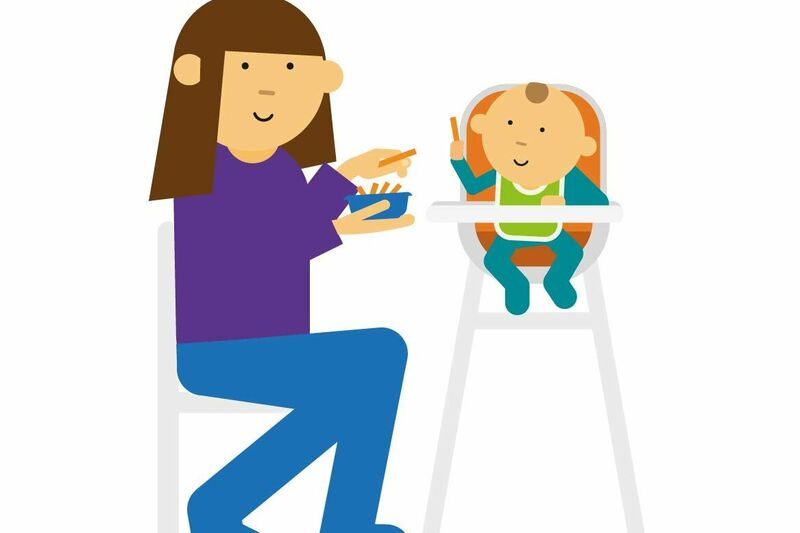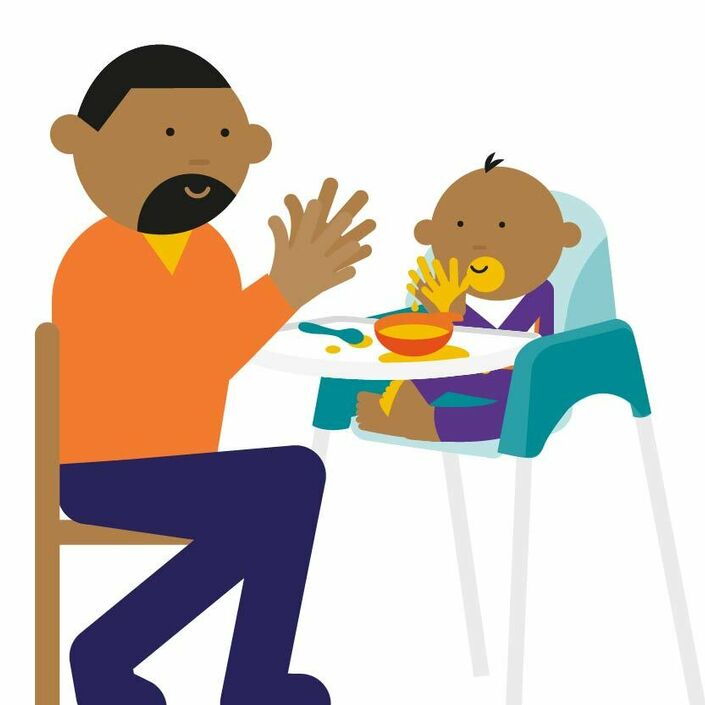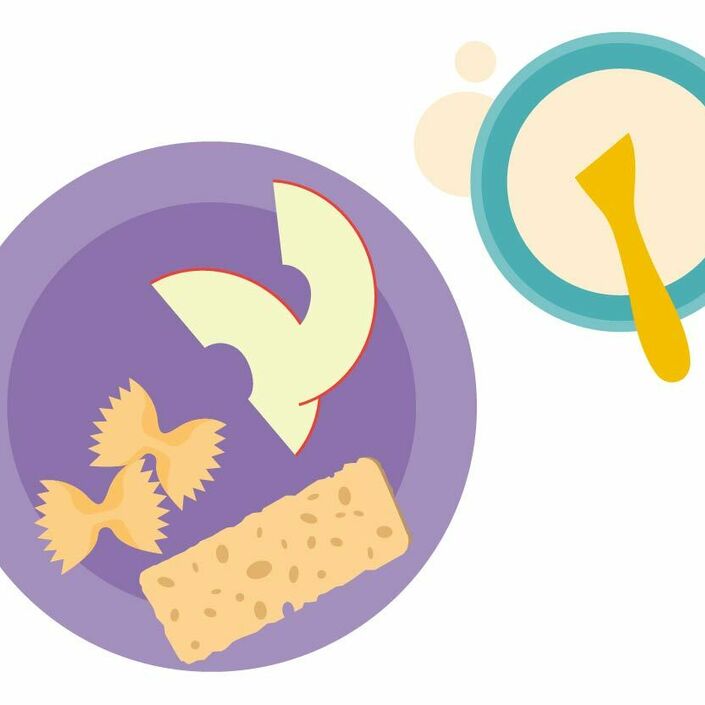It's helpful to choose a time in the day when your baby is well rested and calm - a good time can be after a nap. If they are tired, or unwell, they may not be able to cope with something new like weaning. Also, if they are too hungry they may get frustrated, so a little while after a milk feed may be a good time. Make sure you have plenty of time.
Try to be somewhere without lots of distractions. This will help you and your baby to focus on learning about eating together.
Your baby will be learning lots of new things when they are weaning so it helps if they can concentrate. If there are many other things happening in the room this can distract them so they lose their concentration.
It is helpful if you can keep a calm atmosphere in the room, put your phone to one side, and switch off the television and other screens so you can give your baby your full attention.
Exploring food is an important part of learning about how to eat it. Offer your baby some food to touch, smell, and taste during the mealtime.
By ‘offering’ we mean ‘put on your baby’s plate’ so they can pick it up and explore it. They may do this by:
- looking at it
- feeling it with their hands
- and finally, trying some in their mouth.
The early stages of weaning can be messy, so be prepared by eating somewhere where mess and spills are OK, or putting down a towel or plastic mat that you can clean up easily later.
It is best for you and your baby to wear clothes that you don’t mind getting food on. A soft silicone bib with a pocket can be useful as it can catch the food before it goes on the floor.








